Project Workshop - Graz, Dec 2018
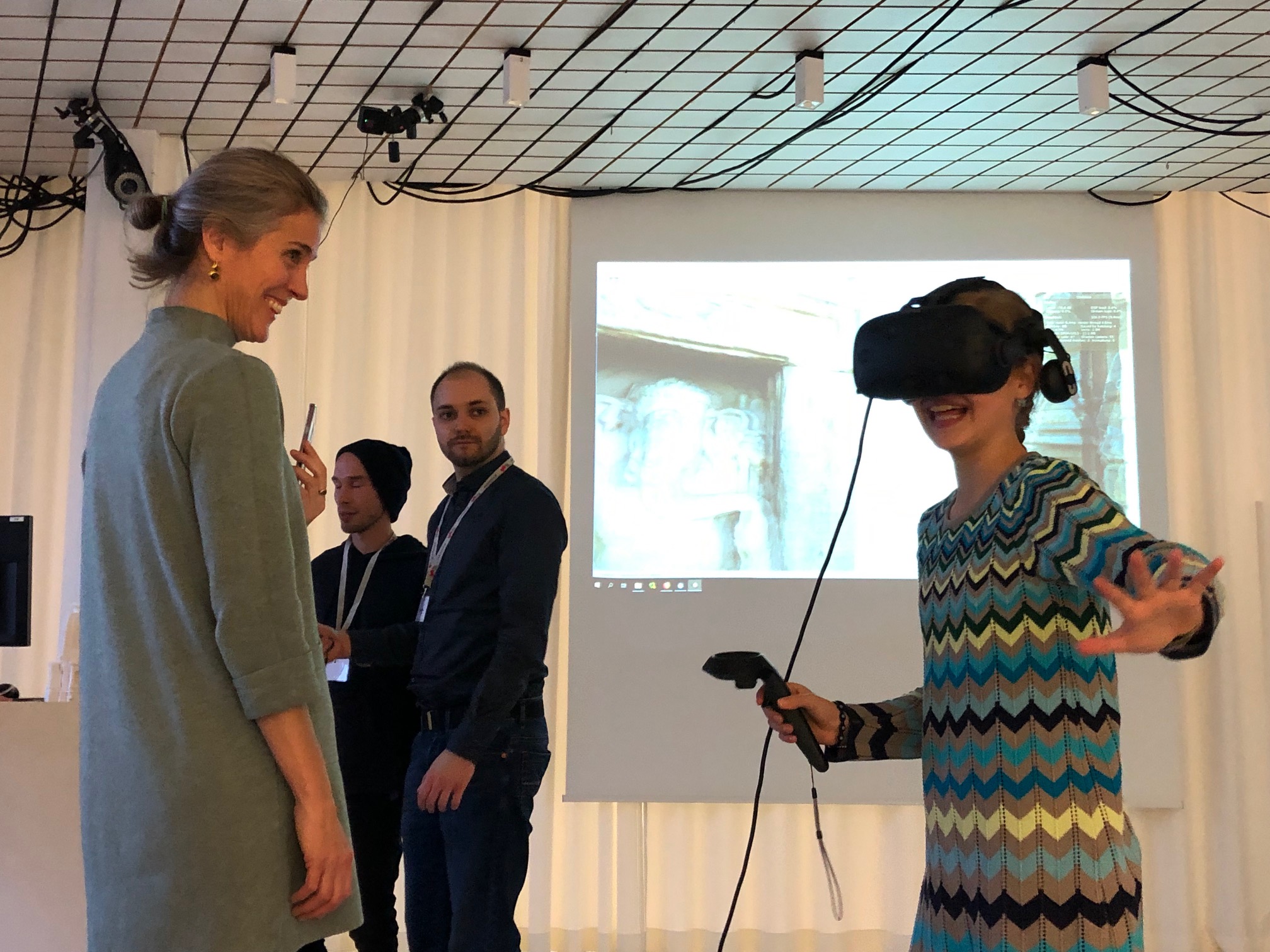
Digital Himalayas: Towards a Digitalisation of Tangible and Intangible Cultural Heritage
On 10th of December our workshop on “Digital Himalayas: Towards a Digitalisation of Tangible and Intangible Cultural Heritage” took place at the media room of our institute. We had colleagues from the fields of art history, computer sciences and archaeology as participants for this interdisciplinary event. The idea of the workshop was to share experiences and results and to raise awareness of the complexity of topics which each discipline faces according to their respective methodologies and research goals. The long-term goal is to establish collaborations and to improve the exchange of data and results.
Following a number of papers on data collection and art history, digitalisation and web presentation in the morning session, we continued with the presentation of some 3D-printed models (scale 1:20), VR (virtual reality) and AR (augmented reality) installations of our results from the Nagara Project. In the course of that session, Elsa Kerin, daughter and “assistant” of visiting professor Melissa Kerin at CIRDIS / Vienna, turned out to be the most inspired user of both the analogue 3D-prints of the temples and the VR set in particular.
SEECHAC 2018 - Naples, November 2018
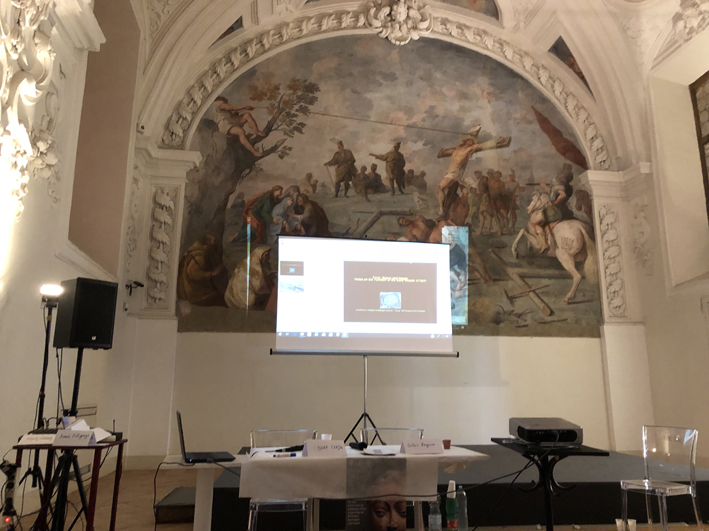
The Fifth Conference of the Société Européenne pour l'Etude des Civilisations de l'Himalaya et de l'Asie Centrale was dedicated to the topic “The Image as Instrument and as Reflection of Ritual in Central Asia and the Himalaya: from Antiquity to the Present”. The presentation by Gerald Kozicz was again on the early stupas of the Alchi Compound. The focus of this presentation was on the question: what was the actual religious function of these monuments? Why had these stupas been constructed as accessible monuments or even “passages” at all – as accessibility in a spatial sense is completely ruled out in the classical stupa concept? Through a comparative study of the architectural configurations, the various names used for that type of stupa, and the interaction of art and space a hypothesis on the over-all idea behind this architectural concept was presented, namely the adaption of the stupa as an instrument to reach a higher level of spiritual experience by reaching the centre of a built mandala space.
EASAA 2018 - Naples, July 2018
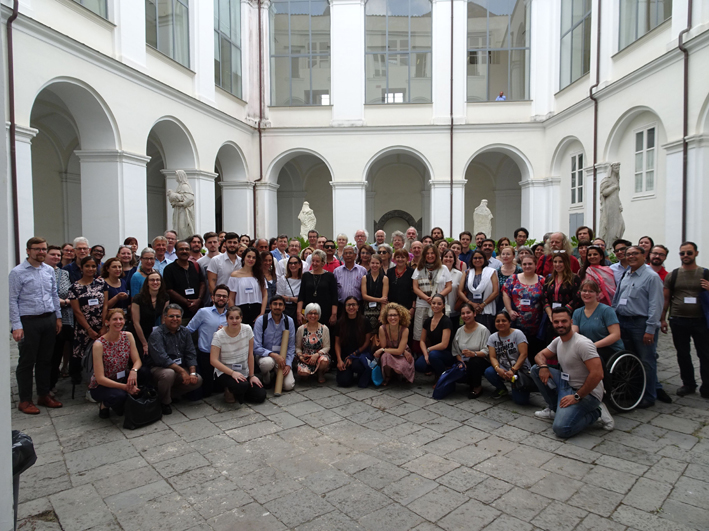
The 24th Conference of the European Association for South Asian Art and Archaeology was hosted by University of Naples “L’Orientale” and the ISMEO. The venue was held at the complex of San Domenico Maggiore in the centre of Naples. In compliance with the over-all academic goal of the organisation, Gerald Kozicz presented an analysis of one of the dilapidating temples of the area around Hat Koti in the modern Shimla District of Himachal Pradesh. The temple is of significant age and displays Gupta and post-Gupta architectural features such as the wagon-type roof of the mandapa (ante-chamber to the inner-most sanctum). The proportional system and the surviving decorative elements of the partly broken shikara tower allow for a dating around 800 AD, if not earlier – a date that finds support by the depiction of a Dancing Shiva in his eight-armed form inside the shukanasa (the structural upper member of the facing side of the ante-chamber).
Photo credit: © 2018 European Association for South Asian Archaeology and Art
New Directions in the Study of Tibetan Art History, Symposium: Harvard, April 2018
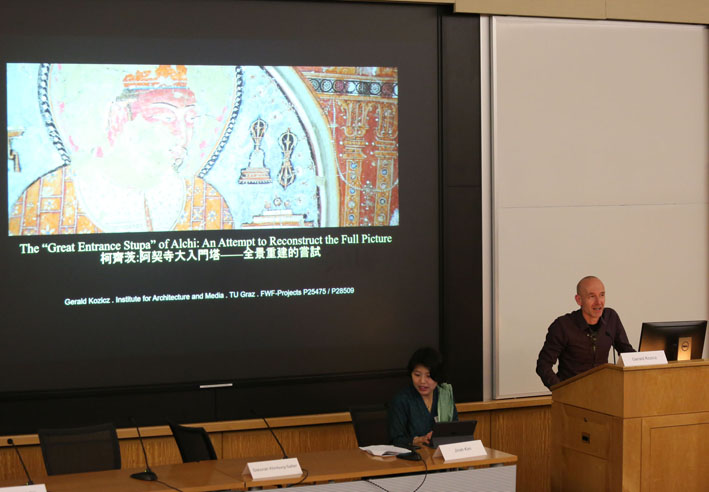
This symposium was hosted by Harvard Yenshing Institute to discuss new currents in the studies of Buddhist art of Tibet. The paper presented by Gerald Kozicz dealt with the architectural and formal features of the Great Entrance Stupa of the Alchi Compound in Ladakh. Following the general introduction of the overall setting and the building as a whole, the focus was turned on the iconographic programme of the inner stupa. To explain the spatial order as well as the details, a model showing the complete programme – originally displayed through mural paintings – as line drawings. This allowed for viewing the complete iconography which is otherwise hardly possible in-situ. As a conclusion, the paintings of the lantern ceiling of the inner stupa were identified as an abstract depiction of a Parishodhana Mandala, the mandala of purification from negative karma.
Himalayan Conference: Bedlewo, April 2018

The annual Himalayan Conference at Bedlewo was dedicated to an unusual topic: My Himalayan Story. In his talk entitled “A Temple called Wanla”, Gerald Kozicz presented a study of the three-tiered temple of Wanla in Ladakh. The presentation aimed at explaining why the architecture predates the 13th-14th-century paintings through an analysis of the structural order of the iconographic programme which centres on a panel on a side wall but not on the main niche opposite the entrance.
AIUCD – Bari, January 2018

At the end of January 2018 Ludwig Grimm and Gerald Kozicz attended the 2018 Conference on Digital Heritage at Bari. Ludwig presented on methodologies for transferring 3D-scanned digital models to low-end consumer hardware like mobile phones or tablets. For this purpose, a proof of concept for a smartphone app had been developed and presented to the audience, using the Gauri-Shankar Temple of Jagatsukh as a case study. The venue took place at the at the former Pallazo delle Poste which – built in the 30-ies of the 20th century – now serves at a student centre.
IAM Open Lecture #17 – Graz, December 2017
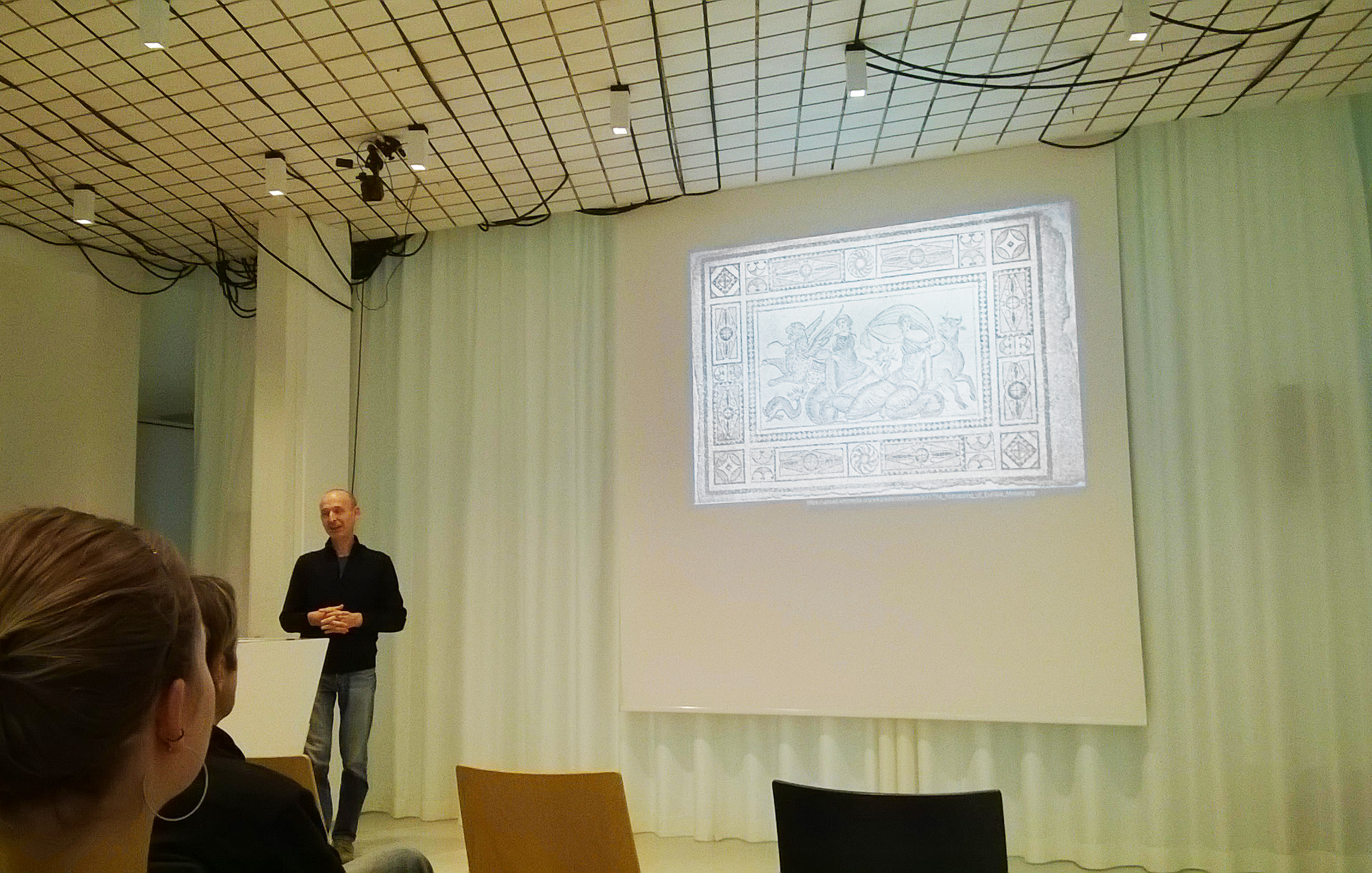
Behind the visual: Digitalization of Indian Stone Architecture
The lecture will present the current state of the 3-year FWF-Project on North-Indian Nagara architecture currently conducted at IAM. The first part will focus on an introduction to this specific form of Indian sacral architecture, with their architectural history of the monuments and their wider cultural context. The second part will be dedicated to the methodologies implemented for digital reconstruction, being a mixture of automated processes and digital craftsmanship. It will present the current results while explaining the further goals and challenges arising by the limitations of possible on-site documentation and technical restrictions.
EAAAA – Zurich, August 2017
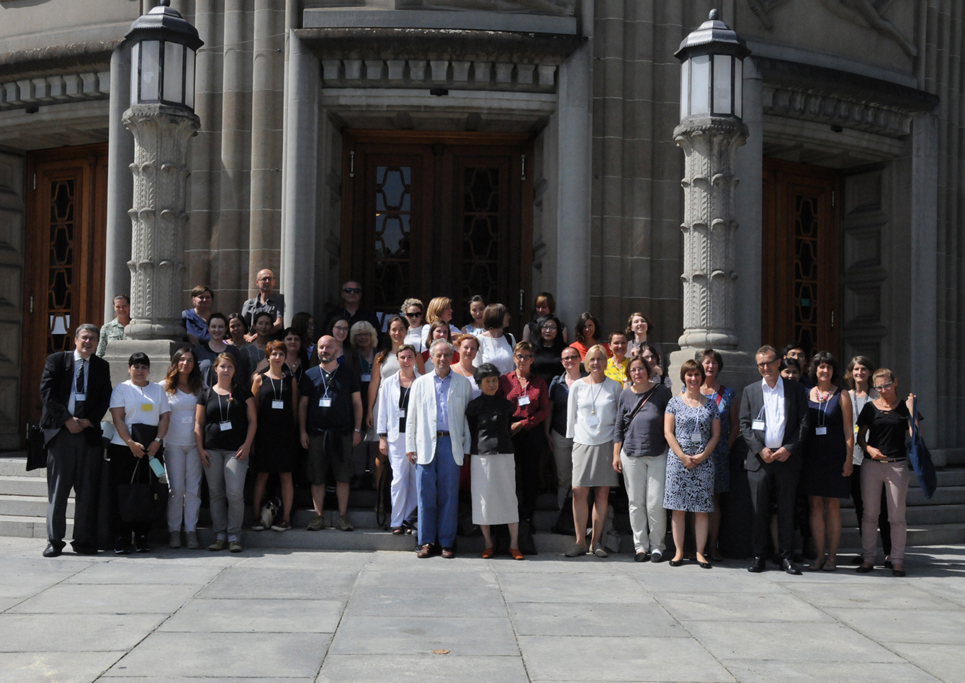
Two papers were presented at the Second Conference of the European Association for Asian Art and Archaeology, held from 24th to 27th of August, 2017, in Zurich, Switzerland
Gerald Kozicz discussed the Gauri Shankar Temple of Dashal: an Introduction of its Architecture and Iconographic System; Marina Đurovka presented the Valley of the Gods: The Small Stone Shrine of Gauri Sankar.
Photo credit: © 2017 International Association for Ladakh Studies
CDH – Leiden, June 2017
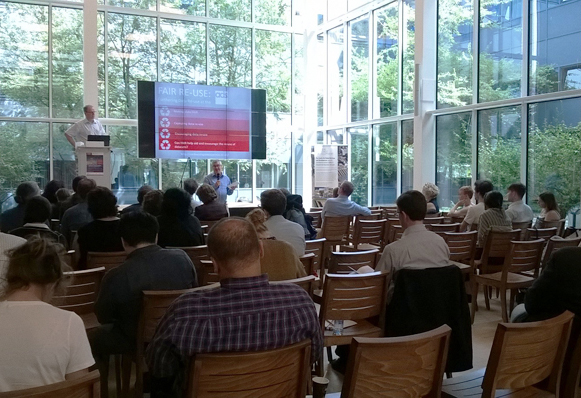
From 13th to 15th of June we attended the 2017 annual meeting of the Centre for Digital Heritage held at Leiden, jointly hosted by Digital Archaeology Research Group and the Centre for Global Heritage and Development at the Faculty of Archaeology of Leiden University.
Gerald Kozicz discussed the compositional aspects of internal visual art inside passageway stupas in the Nubra Valley as well as the interaction of the internal realm with the topographic parameters, the built environment and the actual directions of the compass.
Marina Đurovka presented on the digitalisation and 3D-modelling of the Triloknath Temple at Tonde in Lahul focusing on the challenges arising from inconsistent and incomplete photographic documentations.
IALS 2017 – Bedlewo, May 2017
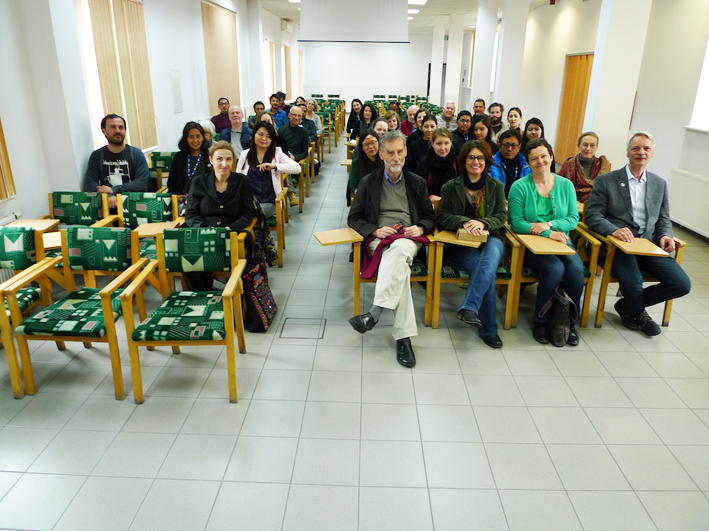
The bi-annual conference of the International Association for Ladakh Studies 2017 was held at Bedlewo near Poznan from May 2nd to May 6th. Gerald Kozicz and Marina Đurovka both presented on subjects related to the architecture and history of the Western Himalayan Region.
Gerald Kozicz discussed a group of stupas in the Nubra Valley. The major topic was the mandala of the 100 Peaceful and Wrathful Deities which is displayed inside the chambers of all those monuments. The presentation particularly focused on the Önpo Lhakhang or Temple of the Astrologer of Sumur which was in the center of this network of monuments.
The talk by Marina Đurovka was on the Temple of Triloknath in Lahul which is both visited by Buddhist pilgrims as well as followers of Shiva. The presentation focused on the door frames of the main temple and the small shrine behind using models generated from photographic material.
Photo credit: © 2017 European Association for Asian Art and Archaeology
Crossing Borders - Vienna, Dec 2016

Two papers were presented at the Conference „Crossing Borders – Recent Developments in Research and Conservation in India“ organised by the Institute of Conservation of the Angewandte, Vienna. Our topics were From Ajanta to Alchi: the re-appearance of the Nidhi imagery in a Tantric Buddhist context and Reconstructing architectural history: a preliminary report on the survey of Nagara Temples in the Kullu Valley.
The Nidhi paper focused on the depiction of the anthropomorphic forms of the „little treasures“ which are well-known from Buddhist sites such as Ajanta and Nagarjunakonda where they can be found among the entourage of Kubera or Jambhala. While the Nidhis in anthropomorphic form has not been documented in the art of the Second Diffusion of Buddhism in Western Tibet, they appear – contemporaneously with Vaishravana – inside two temples at Alchi (modern Lower Ladakh) from around 1300 CE. The paper discussed several surprising similarities with the earlier Indian model including the iconographic parallels, compositional aspects and stylistic details. However, the focus remained on the transformation of the once cute figures into wrathful deities protecting the entrance into the sanctum.
The Kullu paper started with an introduction to the history of the documentation of temple architecture in the region. The actual focus of the presentation was then on the methodology to be applied in the FWF - Nagara Architecture Project. The digital methods of reconstructing architectural structures using a different kind of data sources such as photographic documentation and film were explained by using a small temple compound that has so far escaped scholarly notice and publication: the Shitala Compound of Nagar. In addition to classical elevation drawings, the presentation included 3D-modelling of one of the three facades showing Umaeshvara (also referred to as Gauri Shankar).
Photo credit: © 2016 Institute of Conservation, University of Applied Arts Vienna, photo by Kainz Faksimile Digital.